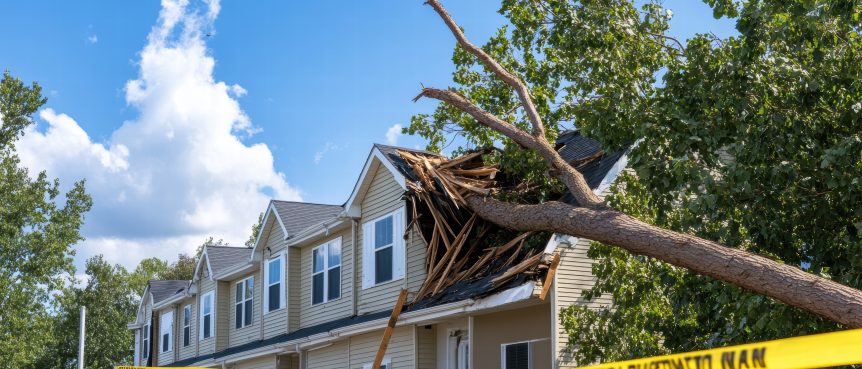When a tree falls, homeowners and their neighbors must navigate who’s responsible when a tree falls, with liability typically hinging on the tree’s location, its condition before falling, and whether negligence was involved.
When It’s Your Tree
If a tree rooted in your yard falls, you might traditionally think you automatically bear responsibility for any damage it causes. However, this isn’t always the case. If a healthy tree falls due to natural events like a storm, you might not bear liability for damages to your neighbor’s property. Many insurance policies consider this an act of nature and thus, responsibility might fall to your neighbor’s insurance to cover their own property damage.
The Neighbors’ Tree Falls on Your Property
Flip the scenario, and a neighbor’s tree falls onto your property. Similar rules apply. If the tree was healthy and toppled due to a weather event or other act of nature, you would generally file a claim with your homeowner’s insurance for the damage to your property. However, if the tree was diseased or dying and your neighbor neglected to remove it, they could be found negligent, making them potentially responsible for any damages.
Documenting the Tree’s Condition Is Key
In cases where someone claims negligence, the tree’s condition before falling becomes critically important. Documenting this can range from photos that show the tree’s declining health to professional arborist reports. If you’ve communicated concerns to your neighbor about their potentially hazardous tree before it falls, make sure to keep a record of these communications as well.
Local Ordinances and Insurance Policies
It’s worth noting that local laws and ordinances can have a significant impact on these situations. Some locales have specific regulations regarding tree maintenance, which can influence the determination of negligence. Similarly, how your homeowner’s insurance policy and your neighbor’s policy cover damages can also vary based on the details of each policy. It’s always a good idea to understand your policy and to encourage dialogue with your neighbors about theirs.
Prevention Is the Best Approach
The best way to avoid the complications of a fallen tree is through prevention. Regularly inspect trees on your property for signs of disease or decay and consult with a professional arborist if you’re unsure about a tree’s health. Encourage your neighbors to do the same. Sometimes, a friendly conversation about a potentially hazardous tree can prevent future disputes and preserve both your property and your relationship with your neighbors.
Conclusion
Determining responsibility when a tree falls can be complex, and understanding who’s responsible when a tree falls often hinges on negligence, the tree’s health, and local laws. Open communication with your neighbors can help reduce potential conflicts, while regular tree maintenance and a clear understanding of your insurance policy provide the best protection against unexpected liabilities caused by falling trees.

